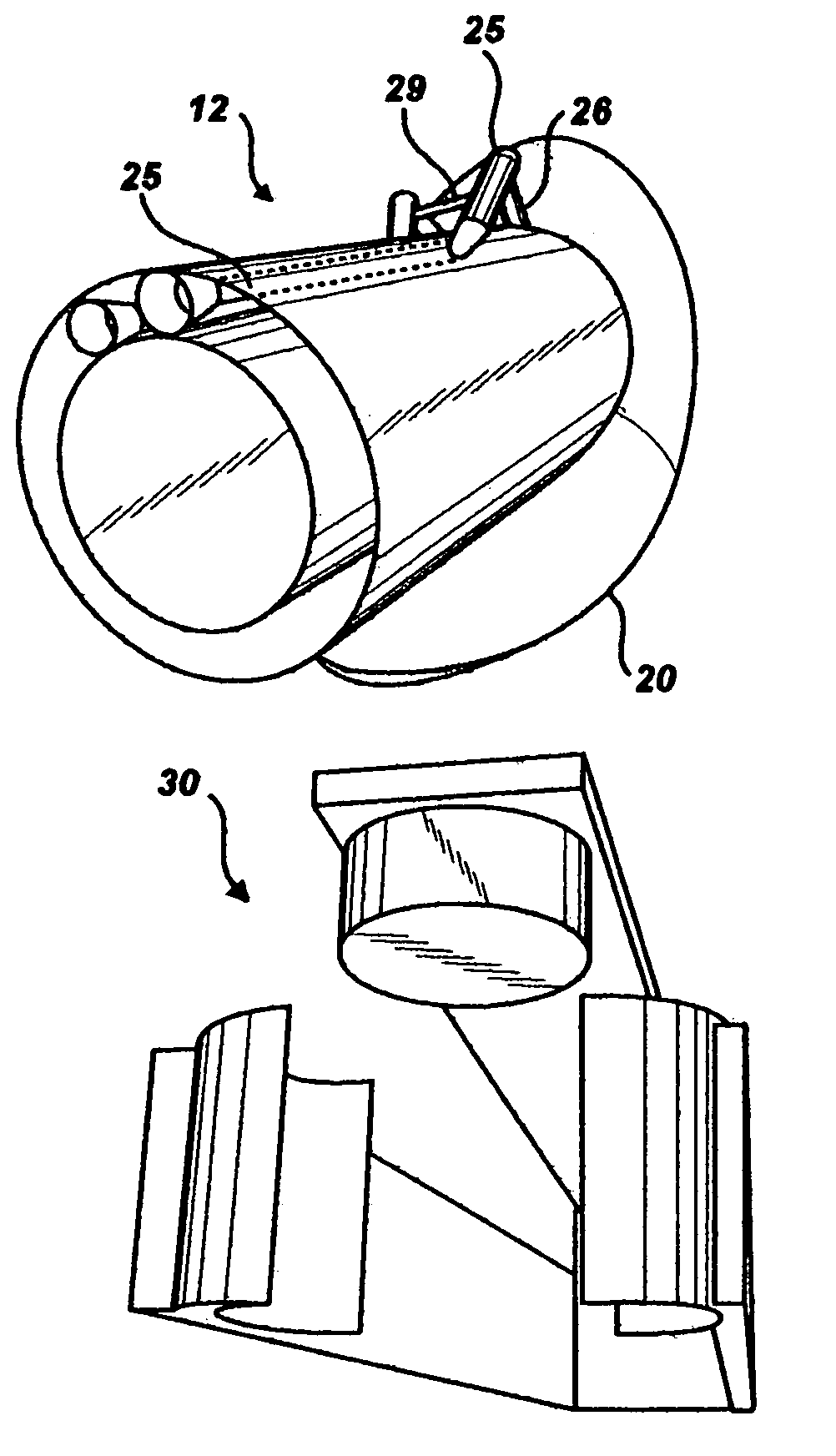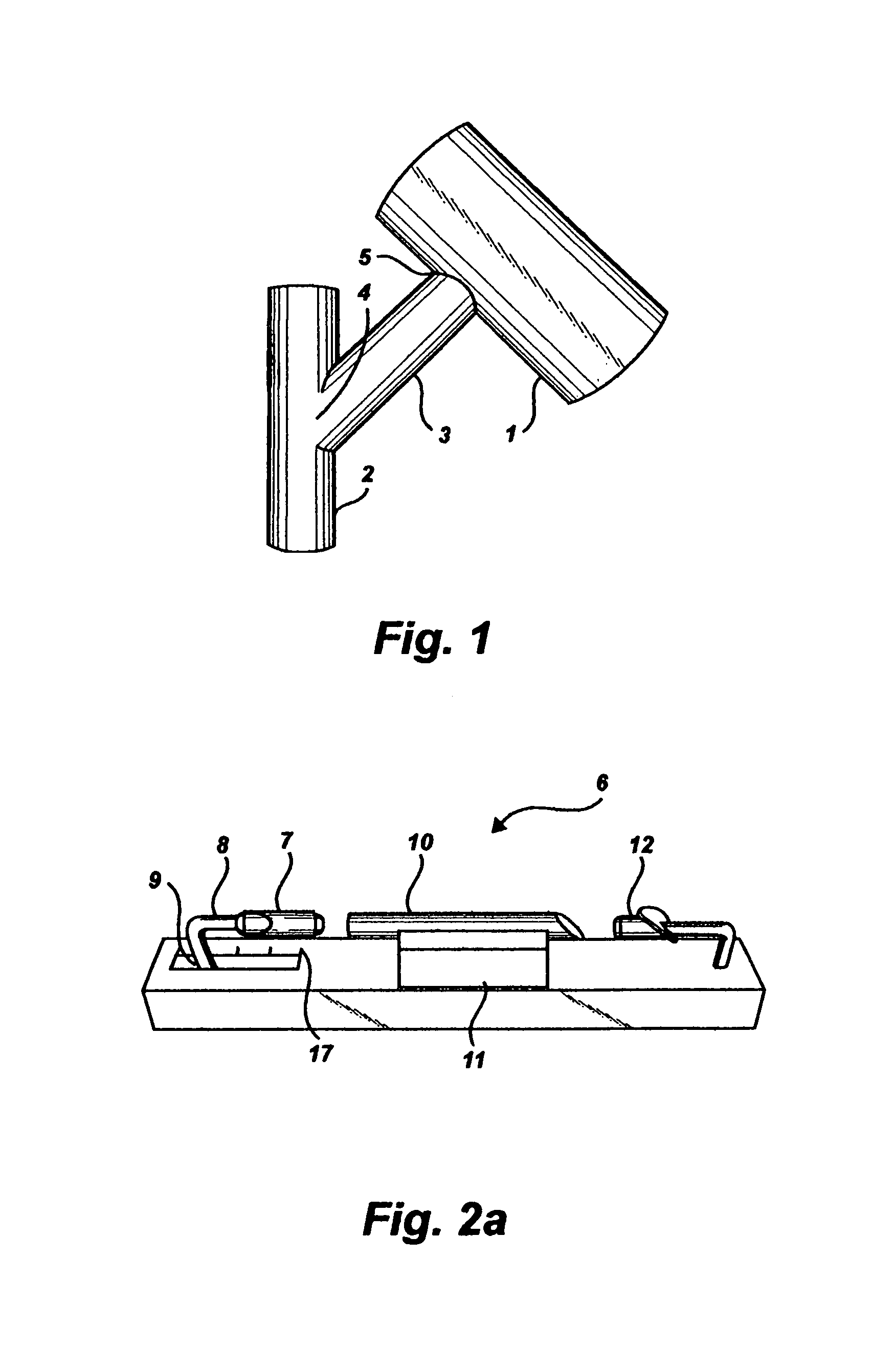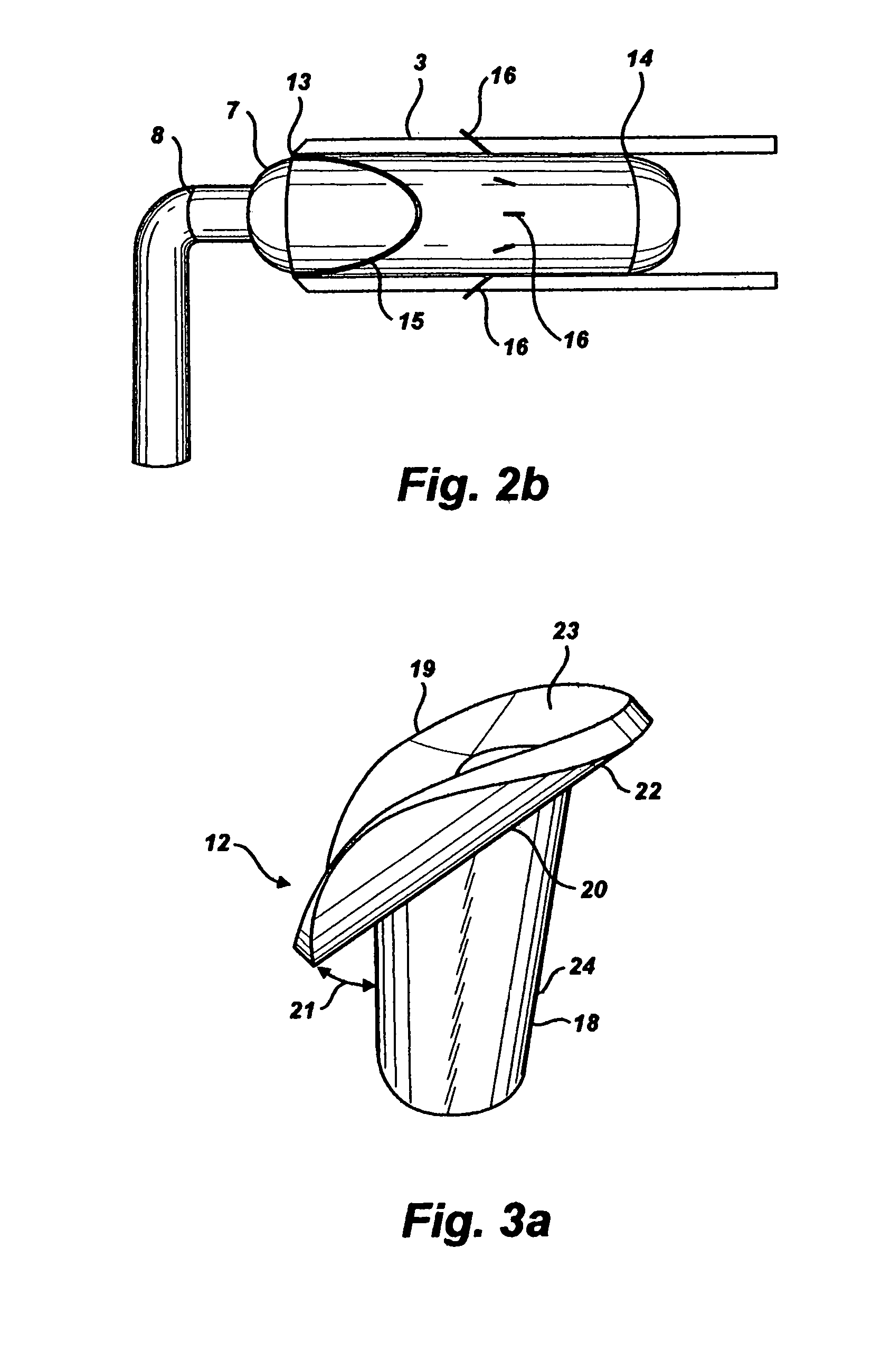Graft core for seal and suture anastomoses with devices and methods for percutaneous intraluminal excisional surgery (PIES)
a technology of percutaneous intraluminal excision and graft core, which is applied in the field of graft core for seal and suture anastomosis with devices and methods for percutaneous intraluminal excisional surgery, can solve the problems of physiological damage, premature death in industrialized societies, and severe strain on patients
- Summary
- Abstract
- Description
- Claims
- Application Information
AI Technical Summary
Benefits of technology
Problems solved by technology
Method used
Image
Examples
Embodiment Construction
[0065]FIG. 1 shows the product of the present invention that is visually the same as that of prior art; the sides of a mammalian first tube 1 and second tube 2 connected by the transected ends of a graft 3. The transected ends of said graft are also identified 4, 5. The present invention has additional features that are not part of prior art, including a doubly sealed graft, no more collateral damage to the body than percutaneous entry, suturing accomplished in as many seconds as manual suturing requires minutes, no need to stop the heart more than for a few seconds in coronary bypass applications and potential for a larger population who can tolerate a procedure that may be virtually out-patient.
[0066]The innermost endothelial linings of two tubes, called intima, should be in contact all along their circumference for a graft to grow properly. The prior art leaves this to the surgeon's eye-hand coordination skill and a scissors. Many patent applications ignore the need or even thwar...
PUM
 Login to View More
Login to View More Abstract
Description
Claims
Application Information
 Login to View More
Login to View More - R&D
- Intellectual Property
- Life Sciences
- Materials
- Tech Scout
- Unparalleled Data Quality
- Higher Quality Content
- 60% Fewer Hallucinations
Browse by: Latest US Patents, China's latest patents, Technical Efficacy Thesaurus, Application Domain, Technology Topic, Popular Technical Reports.
© 2025 PatSnap. All rights reserved.Legal|Privacy policy|Modern Slavery Act Transparency Statement|Sitemap|About US| Contact US: help@patsnap.com



